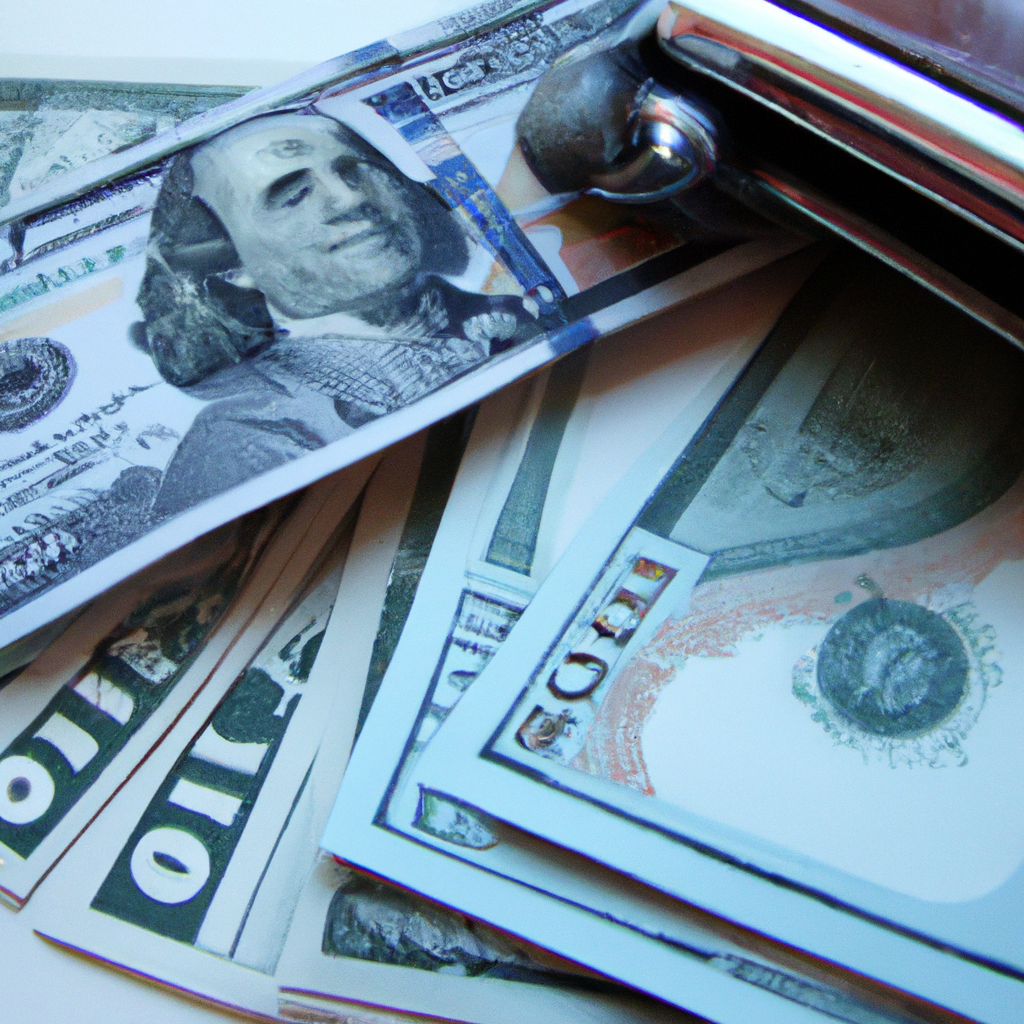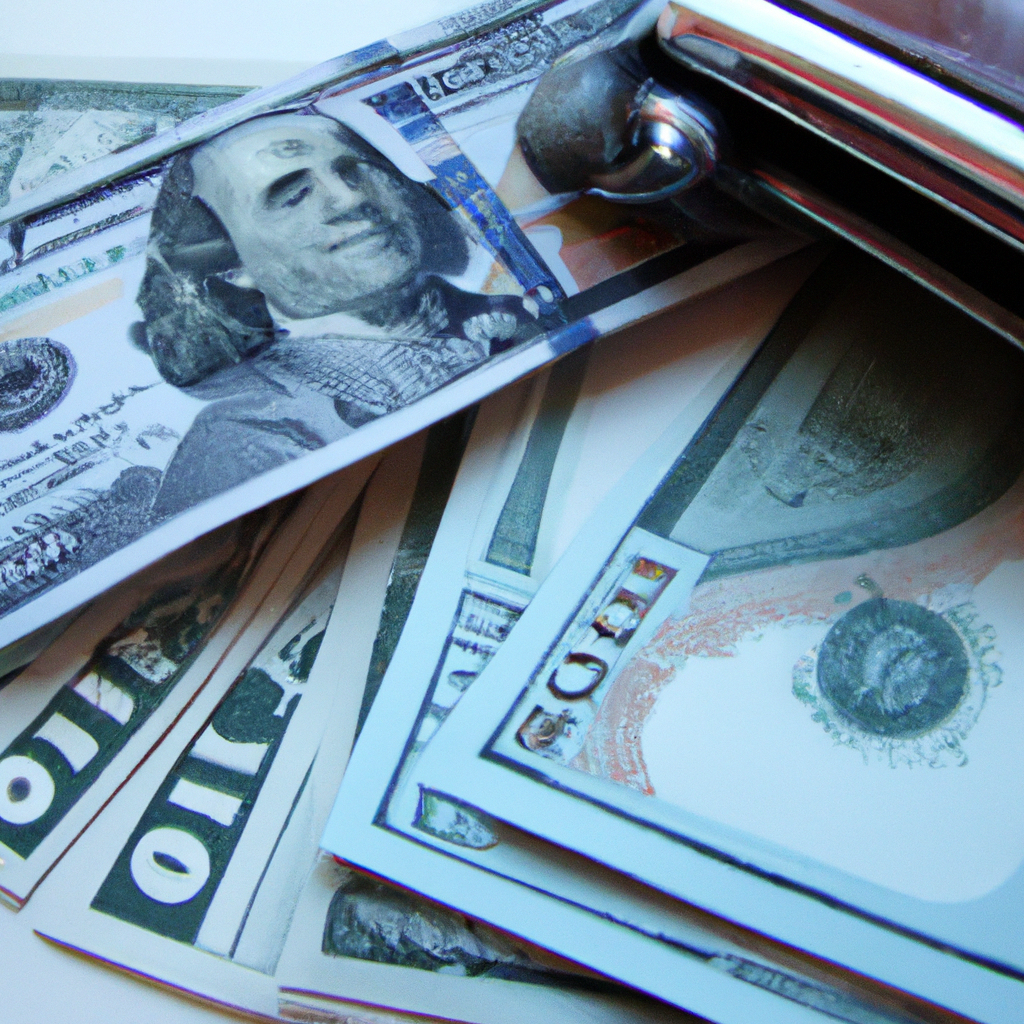
How Do I Handle Foreign ATM Withdrawals And Currency Exchange Fees?
Navigating foreign ATM withdrawals and currency exchange fees can be a daunting task, but fear not! This article is here to guide you through the ins and outs of handling these financial transactions abroad. We’ll provide you with tips and tricks to avoid excessive fees, find the best exchange rates, and ensure a hassle-free experience while accessing your funds overseas. So sit back, relax, and let us take the stress out of handling your foreign ATM withdrawals and currency exchange fees.
Researching ATM Options
Researching ATM Networks
When you’re planning your trip abroad, it’s important to research the ATM networks available in your destination country. Different countries have different ATM networks, and it’s a good idea to find out which networks are widely accepted. This will help you identify which ATMs you can use to withdraw cash without incurring hefty fees. Look for ATMs that are part of global networks like Visa or Mastercard, as these are often the most widely accepted.
Comparing ATM Fees
One of the key factors to consider when researching ATM options is the fees associated with withdrawing cash. ATM fees can vary widely, and it’s important to compare the fees charged by different ATM networks or banks. Some ATMs may charge a flat fee per transaction, while others may charge a percentage of the amount withdrawn. Additionally, some banks may impose additional fees for using ATMs that are not within their network. By comparing ATM fees, you can choose an option that minimizes your costs.
Finding Nearby ATMs
While it’s important to research ATM networks and fees, it’s equally important to consider the accessibility of ATMs in your destination country. Make sure to find out if there are ATMs located conveniently near your accommodation, major tourist attractions, or transportation hubs. This will ensure that you have easy access to cash whenever you need it. Additionally, consider the safety of the areas where ATMs are located. Look for well-lit and secure locations to minimize the risk of encountering any issues while using an ATM.
Understanding Currency Exchange Rates
Knowing the Official Exchange Rate
Before you travel, it’s helpful to familiarize yourself with the official exchange rate of the local currency in your destination country. The official exchange rate is set by the government or central bank and represents the value of the currency against other foreign currencies. Knowing the official exchange rate can help you estimate the value of your home currency and understand the price of goods and services in the local currency.
Understanding the Mid-Market Rate
In addition to the official exchange rate, it’s also important to understand the mid-market rate when dealing with currency exchange. The mid-market rate is the rate at which banks and financial institutions buy and sell currencies between themselves. This rate is often more favorable than the rate offered by exchange services or ATMs. By comparing the mid-market rate with the rates offered by other providers, you can ensure that you’re getting a fair exchange rate.
Researching Local Currency Exchange Providers
If you prefer to exchange currency in person rather than using ATMs, it’s important to research local currency exchange providers in your destination country. Look for reputable exchange offices or banks that offer competitive rates and low fees. It’s a good idea to check customer reviews or ask for recommendations from locals or fellow travelers to ensure that you’re choosing a reliable provider. Keep in mind that exchange rates may vary between providers, so it’s worth comparing rates before making a decision.
Using a Credit or Debit Card
Notifying Your Bank or Credit Card Provider
Before you leave for your trip, it’s crucial to notify your bank or credit card provider about your travel plans. This will help avoid any potential issues or holds on your account due to suspicious activity. Informing your bank about your travel destinations and dates will ensure that they are aware of your international transactions and can monitor your account for any fraudulent activity. Some banks also offer travel notification services through their online banking platforms, making it convenient to inform them about your travel plans.
Using the Local Currency Option
When using your credit or debit card abroad, you may be given the option to pay in your home currency or the local currency. Opting to pay in the local currency is generally the better choice as it allows your bank to handle the currency conversion at a favorable rate. If you choose to pay in your home currency, the merchant or ATM may apply their own exchange rate, which could result in additional fees or a less favorable conversion rate. Selecting the local currency option ensures transparency and minimizes unnecessary charges.
Avoiding Dynamic Currency Conversion
Dynamic Currency Conversion (DCC) is a service offered by some merchants or ATMs that allows you to pay in your home currency rather than the local currency. While this may seem convenient, it often comes with high fees and unfavorable exchange rates. It’s generally advisable to decline DCC and choose the local currency option instead. By doing so, you can avoid unnecessary charges and ensure that you’re getting the best possible exchange rate.
Using a Prepaid Travel Card
Comparing Prepaid Card Options
A prepaid travel card can be a convenient option for carrying and accessing your travel funds. Before choosing a prepaid card, it’s important to compare the options available to find one that suits your needs. Look for cards that offer low or no fees for loading money, ATM withdrawals, and currency conversion. Consider factors such as the availability of the card’s network in your destination country and the ease of reloading funds while abroad. Reading reviews or seeking recommendations can also help you make an informed decision.
Loading and Activating the Card
Once you have chosen a prepaid travel card, you need to load it with funds and activate it before your trip. Most cards can be loaded online or at designated locations and allow you to transfer funds from your bank account or credit card. Follow the instructions provided by the card issuer to ensure that your funds are loaded securely. Additionally, remember to activate your card before you travel to ensure that it is ready for use upon arrival in your destination country.
Understanding ATM Fees and Exchange Rates
While prepaid travel cards can be convenient, it’s important to understand the fees and exchange rates associated with using the card. Some cards may charge fees for ATM withdrawals or have limitations on the number of free withdrawals allowed. Additionally, check the card’s exchange rate to ensure that it is competitive and offers a fair conversion rate. By understanding the fees and exchange rates, you can effectively manage your expenses and choose the most cost-effective option.
Negotiating Exchange Rates
Knowing When to Negotiate
In certain situations, particularly when exchanging large sums of money, it may be possible to negotiate the exchange rate offered by currency exchangers. This is more commonly applicable in countries where haggling and negotiation are common practice. However, it’s important to exercise caution and ensure that you are dealing with a reputable and authorized exchange provider. Negotiating exchange rates is not a widely accepted practice and may not always yield favorable results, so it’s important to weigh the potential benefits against the risks involved.
Understanding Local Currency Values
To have a better understanding of exchange rates and negotiate effectively, it’s helpful to familiarize yourself with the local currency values in your destination country. Researching the current exchange rate and comparing it to historical trends can provide insights into whether the local currency is over- or undervalued. This knowledge can help you make more informed decisions when exchanging currency and potentially improve your negotiating position.
Avoiding Unauthorized Currency Exchangers
While negotiating exchange rates can be advantageous in certain situations, it’s essential to exercise caution to avoid unauthorized currency exchangers. Illicit currency exchange operations may offer attractive rates but can be involved in illegal activities and scams. Stick to authorized currency exchange offices or banks that have a reputable presence. Take time to read customer reviews, ask for recommendations, and ensure that the provider is licensed and regulated by the relevant authorities.
Minimizing ATM Fees
Checking Your Bank’s International Partners
To minimize ATM fees, it’s worth checking if your bank has international partnerships with other banks in your destination country. Partnering banks often allow their customers to use each other’s ATMs without incurring additional fees. By withdrawing cash from partner ATMs, you can significantly reduce or eliminate the fees that would be charged for using non-partner ATMs. Contact your bank or check their website to find out if they have any international partnerships in place.
Using ATMs at Major Banks
When withdrawing cash from ATMs, it’s generally advisable to opt for ATMs at major banks. Major banks often have a wider network of ATMs, better security measures, and may charge lower fees compared to independent or smaller banks. Additionally, major banks are more likely to have English language options on their ATMs, making it easier for international travelers to navigate the withdrawal process. Choose ATMs located at reputable banks to ensure a smoother and more cost-effective experience.
Withdrawing Larger Amounts to Reduce Frequency
One way to minimize ATM fees is to withdraw larger amounts of cash each time rather than making frequent small withdrawals. Most ATMs charge a flat fee per transaction, meaning that withdrawing a larger sum at once will result in a lower fee per unit of currency. However, consider the safety aspect of carrying larger amounts of cash and ensure that you have a secure place to store the money. Balance the benefits of reduced fees with the risk of having a significant amount of cash on hand.
Avoiding Currency Exchange Fee Surcharges
Using Local Currency at Retailers
When making purchases abroad, it’s generally advisable to use the local currency instead of paying in your home currency. Some retailers and businesses may offer the convenience of paying in your home currency but at the cost of high exchange rate fees or surcharges. By using the local currency, you can avoid these additional charges and ensure that you’re not overpaying for goods or services. Always ask to be billed in the local currency and check your receipt for any currency conversion fees.
Using Credit Cards with No Foreign Transaction Fees
Credit cards can be a convenient payment method when traveling, but it’s important to choose cards that do not charge foreign transaction fees. Many credit cards offer this benefit, allowing you to make purchases abroad without incurring additional fees. It’s worth researching and comparing credit cards to find ones that offer favorable exchange rates, low fees, and additional travel perks like travel insurance or rewards. By using a credit card with no foreign transaction fees, you can save money and enjoy a hassle-free transaction experience.
Researching Banks with Low Exchange Fees
If you prefer to exchange currency at banks instead of using ATMs or third-party exchange services, it’s important to research banks that offer low exchange fees. Different banks may have varying fee structures and exchange rates, so it’s worth comparing options to find one that offers competitive rates. Keep in mind that some banks may have minimum or maximum exchange amount requirements, so it’s important to check these details beforehand. Researching banks with low exchange fees ensures that you’re getting the most value for your money.
Maximizing Currency Conversion
Understanding the Spread
When it comes to currency conversion, it’s important to understand the concept of the spread. The spread refers to the difference between the buying and selling rates for a particular currency. Currency exchange providers and banks make a profit by offering less favorable rates when selling currency compared to the rates they buy it at. To maximize your currency conversion, it’s advisable to find providers with smaller spreads, as this means you’ll get a more favorable exchange rate and lose less value during the conversion process.
Exchanging Currency at the Right Time
Timing is crucial when it comes to currency exchange. Exchange rates fluctuate constantly due to various factors, including economic conditions and geopolitical events. To maximize your currency conversion, keep an eye on exchange rate trends and consider exchanging currency when the rates are more favorable. However, predicting currency fluctuations is challenging, and it’s important to weigh the risks involved. If you’re not comfortable with timing the market, it may be safer to exchange currency in advance or rely on other payment methods like credit cards.
Using Online Currency Exchange Platforms
Online currency exchange platforms can be a convenient option for maximizing your currency conversion. These platforms often offer competitive exchange rates and lower fees compared to traditional banks or exchange services. They allow you to exchange currency online and have it delivered to your doorstep or loaded onto a prepaid travel card. However, it’s important to choose reputable and regulated platforms to ensure the security of your transactions and protect against potential scams or fraudulent practices.

Safety and Security Tips
Using Secure and Well-Lit ATMs
When using ATMs abroad, it’s important to prioritize your safety and choose secure locations for withdrawals. Look for ATMs that are well-lit, located in busy public areas, and have security features like surveillance cameras. Avoid using ATMs that appear to be tampered with or are located in isolated or dimly lit areas. If possible, use ATMs inside bank branches, as these are generally more secure. Being vigilant and aware of your surroundings can help minimize the risk of becoming a target for theft or fraud.
Keeping Your Cards and Money Safe
To ensure the safety of your cards and money while traveling, it’s important to take certain precautions. Avoid keeping all your cards and cash in one place, and consider using a money belt or a secure wallet with RFID protection to prevent electronic theft. Keep a photocopy or digital scan of your important documents and card details in a separate location in case of loss or theft. Additionally, refrain from displaying large amounts of cash in public and be discreet when handling your cards or entering PINs at ATMs.
Avoiding Sharing Personal Information
While using ATMs or interacting with currency exchange providers, it’s crucial to safeguard your personal information. Be cautious when sharing sensitive details like your PIN or providing personal identification documents to individuals or establishments you’re unfamiliar with. Only provide information to authorized and reputable service providers, and never disclose your personal information to strangers or via unsecured means of communication. Being vigilant and cautious with your personal information is essential for preventing identity theft or fraudulent transactions.
Dealing with ATM Issues
Retrieving a Jammed Card
If your card gets stuck or jammed in an ATM, it can be a stressful situation. Remain calm and avoid attempting to forcefully retrieve the card yourself, as this could cause further damage. Look for a contact number provided on the ATM or nearby signage and call the helpline to report the issue. It’s advisable to contact your bank as soon as possible to inform them of the situation and seek guidance on how to proceed. They will be able to assist you in retrieving the card or issuing a replacement if necessary.
Handling Non-Dispensing ATMs
Encountering a non-dispensing ATM, where the machine does not release the cash after a successful transaction, can be frustrating. If this happens, it’s important to immediately check your account balance and transaction history to ensure that the funds were not deducted. Take note of transaction details, such as the ATM location and time, and contact your bank to report the issue. They will be able to investigate the incident and assist you in resolving any discrepancies or potential fraud.
Resolving Discrepancies with the Bank
In the unfortunate event of encountering discrepancies or issues with your bank transactions, it’s important to reach out to your bank as soon as possible. Contact their customer service helpline, provide them with all the relevant details, and explain the problem you encountered. Banks have dedicated departments to handle dispute resolution and will guide you through the necessary steps to resolve the issue. Documentation, such as transaction receipts or account statements, can be useful in providing evidence and facilitating a quicker resolution.








